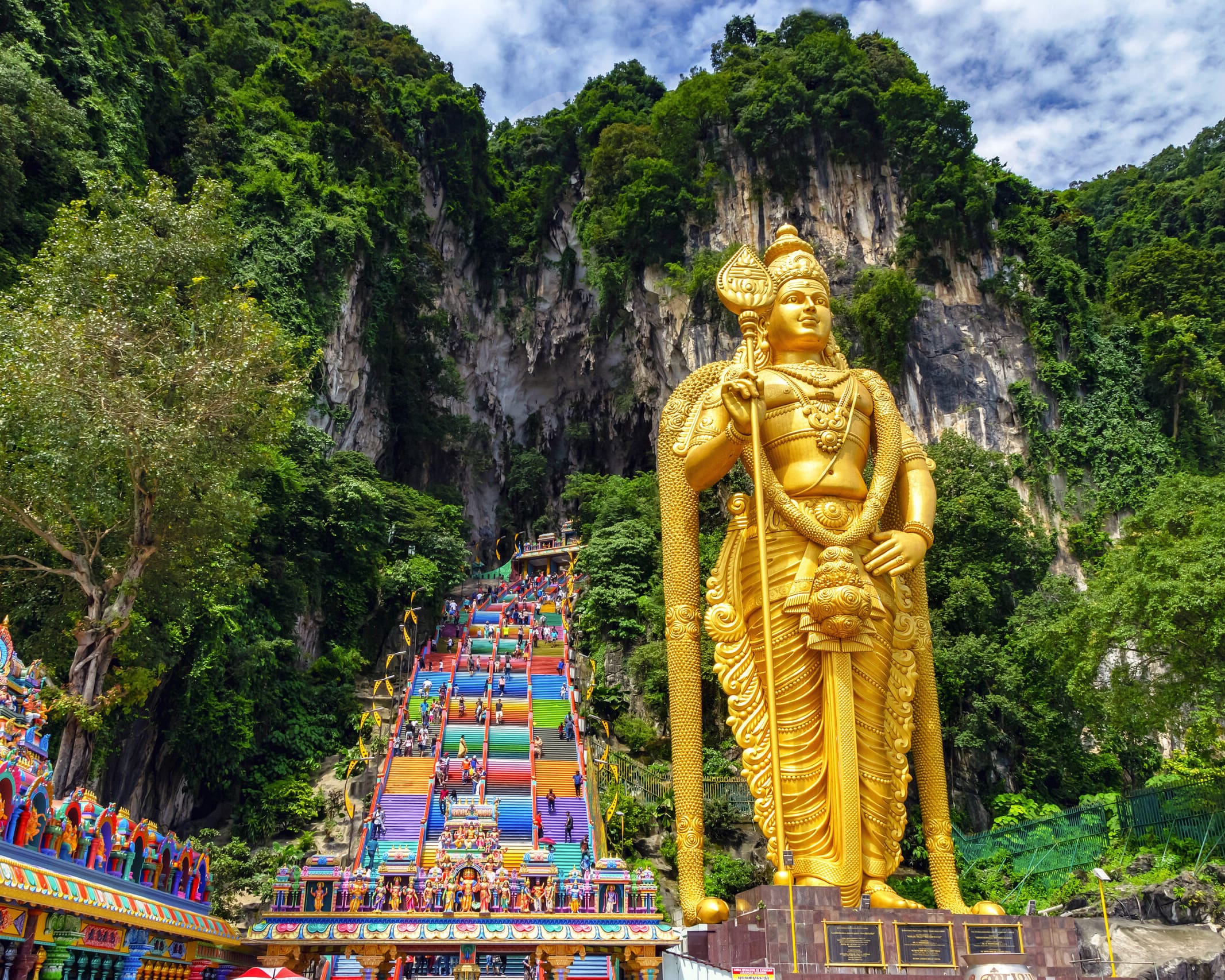Welcome to Malaysia, where ancient rainforests meet modern skylines and cultural traditions blend seamlessly with contemporary life. Malaysia isn’t just a destination; it’s a vivid tapestry woven from the threads of diverse cultures, religions, and landscapes.
From the bustling streets of Kuala Lumpur, marked by the iconic Petronas Towers, to the tranquil beaches of Langkawi and the historic pathways of Penang and Malacca, every corner of Malaysia promises an adventure. Savor the flavors of its world-renowned cuisine, dive into its crystal-clear waters, and explore its lush jungles.
Whether you’re seeking the thrill of urban exploration or the serenity of nature escapes, Malaysia offers a unique journey for every traveler.

The Best Time To Visit
The best time to visit Malaysia largely depends on the region you plan to explore due to its equatorial climate, which results in warm weather year-round, coupled with distinct monsoon seasons affecting different parts of the country at different times.
For Peninsular Malaysia, which includes popular destinations like Kuala Lumpur, Penang, and the east coast islands (like Tioman, Perhentian, and Redang), there are two primary seasons to consider:
- The East Coast experiences its monsoon season from November to February, making the best time to visit from March to October when the weather is dry and sunny.
- The West Coast, on the other hand, sees its wettest months from April to October, with a peak in rainfall around April and October. Thus, the best time to visit is from November to March, when the weather is relatively dry and suitable for beach activities and exploring the cities.
For East Malaysia (Malaysian Borneo), including Sabah and Sarawak:
- Sabah is best visited from May to September when the weather is dry, ideal for climbing Mount Kinabalu or visiting the islands for snorkeling and diving.
- Sarawak’s drier months are from June to August, making it an excellent time for exploring national parks and outdoor activities.
What To Know
In Malaysia, the official language is Malay, also known as Bahasa Malaysia.
Malaysia is a multicultural country, and this diversity is reflected in its linguistic landscape. In addition to Malay, a variety of languages and dialects are spoken by the country’s ethnic groups.
These include various Chinese dialects (such as Mandarin, Cantonese, Hokkien, Hakka, and Teochew), Tamil (and other Indian languages), indigenous languages from both Peninsular Malaysia and East Malaysia (like Iban and Kadazandusun), as well as English.
The currency used in Malaysia is the Malaysian Ringgit.
Malaysia is generally considered a safe destination for travelers, with a relatively low crime rate.
Petty crime, such as pickpocketing and bag snatching, can occur in crowded places like markets, public transport, and tourist areas. It’s advisable to keep your belongings secure, avoid displaying expensive items conspicuously, and be cautious when using ATMs in less populated areas or at night.
Scams targeting tourists can also be a concern, so it’s wise to be skeptical of unsolicited offers or too-good-to-be-true deals. Always use reputable service providers, whether for transportation, tours, or accommodations.
Public transport in Malaysia is relatively well-developed, especially in major cities like Kuala Lumpur, offering convenient options for both locals and travelers.
In Kuala Lumpur and surrounding areas, the public transport network includes the Mass Rapid Transit (MRT), Light Rail Transit (LRT), and the monorail, which provide efficient and affordable services connecting key urban and suburban areas. The KTM Komuter train service caters to commuters in the broader Klang Valley region.
Buses are widespread and serve as a backbone for both city and long-distance travel. In cities, they offer extensive coverage, though navigating the system may be challenging for first-time visitors. For intercity travel, various companies operate comfortable, air-conditioned coaches connecting major towns and cities across the country, as well as to Singapore and Thailand.
Taxis and ride-hailing services like Grab are widely available in cities and offer a convenient alternative to public transport, with reasonable rates and the convenience of door-to-door service.
Ferries play a crucial role in connecting the mainland with the numerous islands, including popular destinations like Penang, Langkawi, and the Perhentian Islands. These services range from high-speed ferries to slower, larger boats that can accommodate vehicles.
While public transport in urban areas is efficient and modern, accessibility may decrease in rural areas. Renting a car might be a more convenient option for exploring less-connected regions at your own pace.
